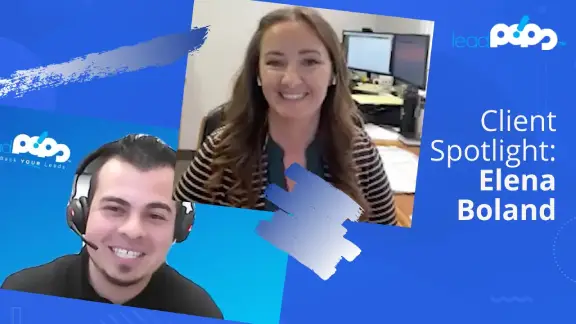How do you get someone who’s visited your website to return and eventually become a genuine lead?
That’s one of the key questions for today’s mortgage marketers.
If you don’t have an answer for it, then it might be time to consider creating your own mortgage marketing newsletter.
“I’ve tried that,” you might say. “No one was interested.”
But were you interesting?
If you put aside enough time and effort, you can grow your mortgage marketing newsletter into something truly special—a way to not only capture potential leads, but to drive up overall interest in your business.
But it doesn’t have to be a constant slog that takes you years to master, either.
Want to write exciting mortgage-related newsletters that will have your audience interested in learning more about you? Then here are a few tips you’ll need to keep in mind:
Focus on Value: Not for You, But Your Potential Clients
If you created a newsletter in the past only to see it fail, there’s a good chance you were suffering from “me, me, me” syndrome.
In other words, everything you wrote was about you and your company. It was about what you’d been going through. It was about what you were thinking. That’s great and all, but think about it this way: if you really wanted to attract potential clients in another medium, would you ever do it by talking about anything other than them? Their needs?
So why ever do it with a newsletter?
To change things up, make sure that your sign-up box and your introductory newsletter hint at the value that you’re going to create for them.
You don’t have to be overly “salesy” or cheesy, either.
You just have to remember to keep the focus on how they can benefit.
If most of your experience focuses on advertising or sending out resumes, then you might be in the “mode” of writing for yourself. But you have to think a different way when it comes to newsletters. You have to think about what the person signing up is signing up for in the first place. What would motivate someone to give you their email? What problems do they have—and what solutions might you be able to offer?
Once you have that in mind, you can write the introductory newsletter. You should keep it brief and focus on your ability to help them.
Take the Time to Brainstorm—and Don’t Write Until You have Ideas
People who are seeking mortgage information are coming to you to feel excited about the possibility of getting a mortgage.
If you want to craft an exciting newsletter, you have to tap into that fact.
That’s why it’s important to sit down and brainstorm a few ways to write your next newsletter. But that’s easier said than done. So let’s explore some of the key areas you’ll want to think about:
- Email themes. Don’t send out an email with more than one theme. Each email should have a singular, compelling message. If you find yourself struggling to fit more in, then there’s a good chance you’re overthinking it.
- Opening sentences. How powerful can you make your opening sentence? How powerful can you make your subject line? If you think about these first, oftentimes, the rest of the email will seem to write itself.
- Calls-to-action. Think about the ultimate goal of the email you’re about to send out. What ideas might you introduce in the body of the email that will lead someone to think—“I’d better click this link”?
Create Ways for Potential Leads to Move Forward
It’s great if you have a tremendous essay of value to send out to your newsletter.
But don’t forget that you have your own goals, too. And that means sending your potential leads to click-able links. Links that might point to a valuable tool you have on your website. Links that will help them continue to find what they’re looking for.
How do you incorporate these links without feeling “cheesy”?
- Keep it short and simple. Don’t go on and on about how they have to click this great link. Think of a more casual tone. Instead of giving them 1,000 words on why they should click the link, simply bring up the link as something they might want to check out. You have something of value and you thought of them—so simply offer it. That’s the tone you want to strike.
- Make your calls-to-action obvious. Is it hard to find the link? Did you hide it somewhere in a long paragraph? Are you only posting one at the end? If you want to get more people clicking on your newsletter links, make sure that you make the calls-to-action obvious. And try to make it more than “Click here.” Write a full engaging sentence, such as “Take my new mortgage quiz today.” This will not only feel less “sales-y,” but will help remind people why they’re subscribed to your newsletter in the first place.
If you want your newsletter to be exciting, remember that it shouldn’t be a standalone piece.
It should be a conduit.
It’s a conduit between an idea and an action. You introduce a problem and the solution in the copy of the email itself.
That’s how you craft compelling email content—not by attaching a call to action and hoping for the best.
Problem and Solution: The Goal of Any Email
Want to write an email that will excite the reader?
Simple: show them the problem—and then show them the solution.
This is the basic structure of storytelling. Any good story introduces characters and a problem they have to overcome. By the end, some sort of resolution is achieved.
It’s that struggle that makes the story interesting and worth reading.
The same is true of a well-crafted newsletter.
If you want someone to pay attention to your newsletter, you’re going to have to introduce some sort of crisis or problem.
This shouldn’t be made up. You might talk about the struggles people might have when they want to find a mortgage despite having low credit. If you have a lot of experience in dealing with people like this, then you likely know what the next steps are, as well.
There will be a lot of people reading your newsletter simply because they found the topic relates to them.
(Remember: we’re trying to give them value first here).
After that, you can introduce the solution. You don’t have to give a big, overarching solution that will wave a magic wand and solve all their problems…but you should point them to the next step.
That next step is something you’ll want to use as your call to action. A quiz, a contact form—whatever it is, it should serve as the next step and the resolution to the conflict you introduced in the subject of the email.
Want to know more about creating exciting mortgage marketing newsletters to supercharge your lead generation online and drastically improve how many leads you receive? Then try a free trial of leadPops, incorporate the ideas you saw in this post, and watch how many leads come your way.







